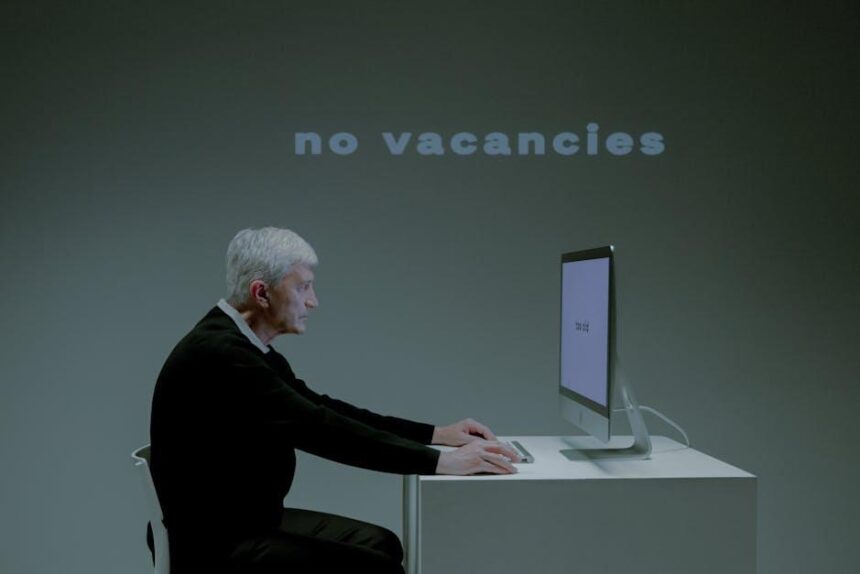Navigating the complexities of unemployment benefits can be a daunting task. In a time of uncertainty, understanding how to effectively apply for these essential resources is crucial. “Mastering Your Unemployment Benefits Application the Right Way” aims to demystify the process, offering practical insights and tips that ensure you present your application with confidence. From comprehending eligibility requirements to avoiding common pitfalls, this article serves as your comprehensive guide to securing the financial support you deserve. Whether you’re new to the process or looking to refine your approach, we’ll equip you with the knowledge to tackle your application with clarity and precision.
Understanding Eligibility Criteria for Unemployment Benefits
Understanding the eligibility criteria for unemployment benefits is crucial for anyone navigating job loss or seeking financial assistance. Each state has its own regulations, but there are several common factors that determine your eligibility across the United States.
- Work History: Most states require applicants to have a minimum amount of work history. This typically includes a certain number of hours worked or earnings within a specified timeframe prior to application.
- Reason for Unemployment: To qualify, you must be unemployed through no fault of your own. Acceptable reasons often include layoffs, business closures, or reductions in force. Being fired for misconduct may disqualify you.
- Availability and Willingness to Work: You must be ready and able to accept suitable work opportunities. This means actively seeking employment and being physically able to work.
- State-Specific Criteria: Each state may have unique provisions regarding eligibility. For instance, some states do not provide benefits to part-time workers or self-employed individuals without a history of contributing to unemployment insurance.
- Ongoing Requirements: After you qualify for benefits, most states have requirements that you must meet to continue receiving assistance, such as submitting weekly claims or attending job training programs.
Here’s a quick overview of eligibility criteria by state:
| State | Minimum Work History | Reasons for Unemployment | Additional Requirements |
|---|---|---|---|
| New Jersey | Base year earnings required | Laid off, breach of contract | Ongoing job search proof |
| Ohio | Minimum number of weeks worked | Fired without cause, layoffs | Weekly claims required |
| Texas | Specific earnings thresholds | Laid off, personal illness | Regular job application documentation |
The eligibility criteria can seem complex but understanding these fundamentals can help streamline your application process. Make sure to consult your state’s unemployment office for the most accurate and specific information tailored to your situation. By being informed, you can maximize your chances of successfully receiving unemployment benefits.

Crafting a Comprehensive Resume for Your Application
Creating a comprehensive resume is essential when you’re applying for unemployment benefits in the U.S. Your resume should not only reflect your work history but also demonstrate your skills and qualifications clearly. Here are some key elements to include:
- Contact Information: Always start with your full name, phone number, email address, and LinkedIn profile if applicable.
- Objective Statement: Write a brief summary that outlines your career goals and why you’re applying for unemployment benefits.
- Work Experience: List your previous jobs in reverse chronological order.
- Education: Include your highest degree, the name of the institution, and graduation date.
- Skills: Highlight relevant skills, especially those that match the job descriptions you’re interested in.
- Certifications: Mention any relevant certifications that can enhance your employability.
When detailing your work experience, consider the following format:
| Job Title | Company Name | Location | Dates Employed | Key Responsibilities |
|---|---|---|---|---|
| Example Position | Company XYZ | City, State | Month/YYYY – Month/YYYY |
|
Tips for a Strong Resume:
- Keep it to one or two pages, using clear and concise language to convey your experience.
- Avoid jargon unless it’s relevant to the job you’re applying for.
- Use bullet points for easy readability and to highlight your achievements.
- Tailor your resume for each application by emphasizing the most relevant experiences and skills.
Finally, consider using online resources or professional services that specialize in resume writing to ensure your application stands out. Many people find success with AI-driven tools that can help customize resumes based on specific job descriptions
Navigating the Application Process with Confidence
Navigating the unemployment benefits application process can feel daunting, but with the right steps and clarity, you can approach it with confidence. Here’s how to make your journey smoother:
Gather Your Essential Information
Before you start the application, it’s crucial to have all your necessary documents at hand:
- Your Social Security number
- Driver’s license or state ID
- Employment history for the last 18 months (names of employers, addresses, and dates worked)
- Details regarding your last employment, including wages
- Bank account information for direct deposit
Understand Your State’s Requirements
Each state in the U.S. has its own unemployment insurance program, so it’s important to familiarize yourself with your state’s specific requirements:
- Eligibility criteria (such as earning a minimum amount or working a certain period)
- Application deadlines and procedures
- Job-seeking requirements during the benefit period
Complete the Application Carefully
When filling out the unemployment application, accuracy is key. Follow these tips:
- Double-check all entries for typos or errors.
- Provide as much detail as possible, including reasons for job loss.
- Be truthful in your disclosures; fraudulent applications can lead to penalties.
Utilize Available Resources
Don’t hesitate to seek help or guidance during your application process. Consider these resources:
- Your state’s unemployment office website, which often provides forms and additional information.
- Local career centers, which can offer in-person support.
- Online forums or community groups that share experiences and tips.
Expect a Waiting Period
Once you submit your application, a waiting period is typically observed. Here’s what you can anticipate:
- Processing times vary, usually within 2-3 weeks.
- You might be asked for additional information or documentation, so stay available.
- Check your application status regularly, either online or by contacting your local office.
Stay Focused on Job Searching
While waiting for your benefits to be approved, continue your job search. Many states require you to actively look for work:
- Keep a log of your job applications and interviews.
- Utilize job boards such as Indeed or LinkedIn to find new opportunities.
- Network with former colleagues and attend job fairs.
Table of Key Unemployment Application Tips
| Tip | Description |
|---|---|
| Organization | Gather all necessary documents before starting your application. |
| Accuracy | Ensure all information is correct to avoid delays. |
| Follow Up | Check your application status regularly and respond to requests promptly. |
| Networking | Continue searching for work and networking to increase your chances of employment. |

Common Mistakes to Avoid for a Successful Submission
When applying for unemployment benefits, avoiding common pitfalls can make the difference between a successful submission and a frustrating delay. Here are key mistakes to be mindful of:
- Inaccurate Information: Ensure that all personal details are correct. Double-check your Social Security number, address, and employment history to prevent miscommunication.
- Missing Documentation: Gather all necessary documents beforehand, including pay stubs, tax forms, and any correspondence with your employer. Missing documents could lead to application rejection.
- Ignoring Deadlines: Be aware of your state’s deadlines for filing unemployment claims. Submitting after the deadline can disqualify you from receiving benefits.
- No Follow-Up: After submitting your application, don’t forget to follow up. Check the status regularly and respond promptly to any requests for additional information.
- Failure to Report Earnings: If you work temporarily while receiving benefits, report any earnings accurately. Failing to do so can result in overpayments, which could lead to penalties.
- Neglecting to Appeal: If your claim is denied, don’t hesitate to appeal. Many applicants accept the first decision without realizing they have the right to contest it.
Here’s a handy checklist to ensure your application is on track:
| Checklist Item | Status |
|---|---|
| Personal Information Checked | ✔️ / ❌ |
| Documents Gathered | ✔️ / ❌ |
| Application Submitted on Time | ✔️ / ❌ |
| Follow-Up Completed | ✔️ / ❌ |
| Earnings Reported Accurately | ✔️ / ❌ |
By steering clear of these mistakes and using this checklist, you’ll improve your chances of a smooth application process for unemployment benefits, ensuring you receive the support you need without unnecessary delays.

In Conclusion
In conclusion, navigating the unemployment benefits application process may seem daunting, but with the right knowledge and resources, you can turn this challenge into an opportunity for support and renewal. By understanding the steps involved, staying organized, and utilizing helpful tools, you are empowered to claim the benefits that you deserve. Remember, every application is a step toward regaining stability and finding your next path. So, take a deep breath, trust the process, and embrace the journey ahead. Your future is waiting, and mastering this process is just the beginning.














